Rejuvenated, reinvigorated and rebooted, everyone is heading to Downtown Los Angeles for best in state food, shopping, art and more.
Once a no-go zone, Downtown L.A. is now the most happening place in California. Regular visitor Mike MacEacheran takes a tour of the can’t-miss, new-look spectacle that is DTLA.
Los Angeles has so much mind-boggling ambition it’s hard to know where to start. The dream-like hotels, malls and stucco hilltop mansions of Beverly Hills and the Hollywood Hills? The seemingly-impossible rides and theme park attractions of Universal City? How about the lip gloss-pink Pacific-coast sunsets of Venice Beach or Santa Monica? Or consider the movie star hangouts of Los Feliz or Silver Lake?
These are all worthy places to check out during a visit to the City of Angels, but nowadays, there’s only one game in town that everyone is talking about. It’s Downtown Los Angeles, or DTLA.
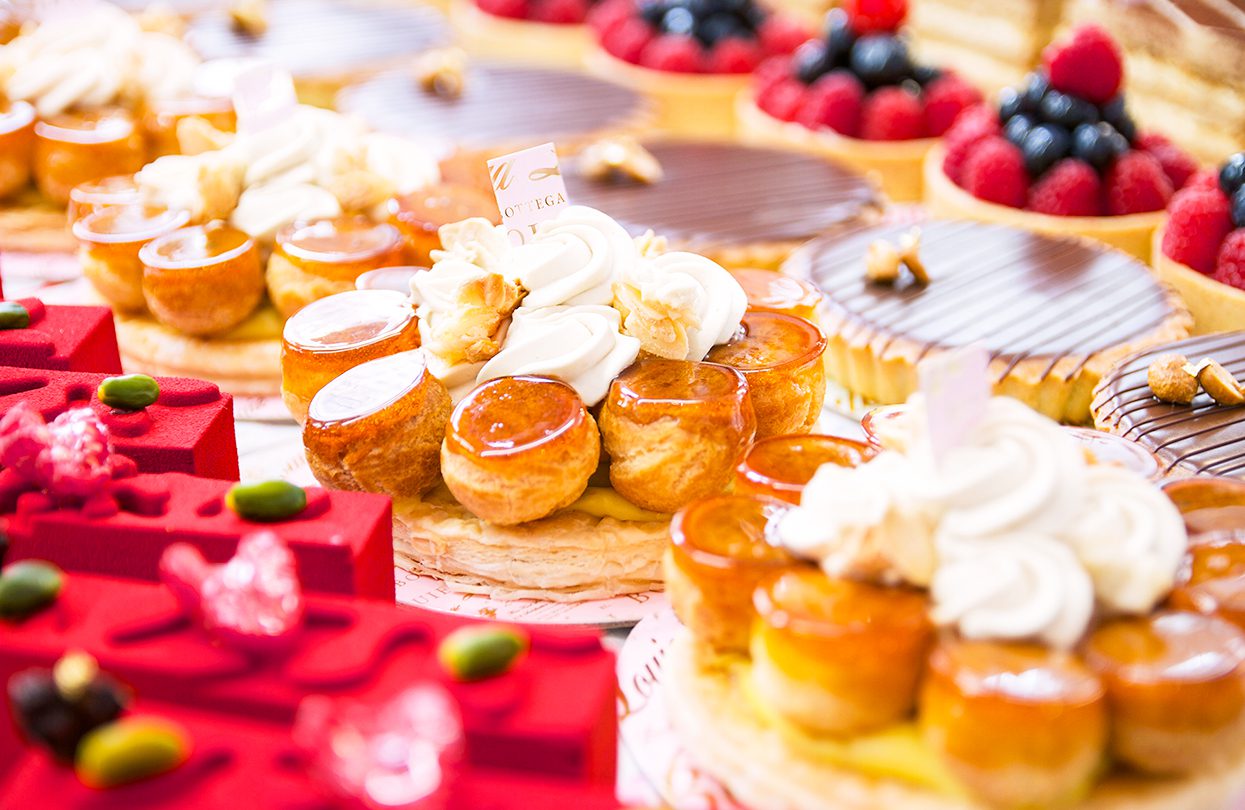
Bottega Louie French patisserie with a California twist
![]()
All point east The Eastern Building, an Art Deco icon of DTLA, opened in 1930 and is now one of the city’s most Instagrammed spots
In a city that loves a box office remake, DTLA has been given a Hollywood-style reboot over the past few years. From the outside, it looks like a hazy Manhattan of sun-glazed skyscrapers, housing little more than banks and insurance companies — a world apart from the L.A. of palm-lined boulevards and coupes beetling down the Sunset Strip.

Ride to La La Land Angel’s Flight tramway welcomed Ryan
But to not delve into Downtown’s streets is to miss a trick. To wander — or Uber, this is still L.A. after all — from Pershing Square to the Fashion District, or from the Staples Center to the Arts District, is to experience somewhere resolutely local. Somewhere fresh and changing. Somewhere veg-centric and concerned with microbreweries and street art. Somewhere to be savoured, rather than rushed. You can almost hear the whumpf and feel the change on the streets yourself.

City Market South’s Rossoblu restaurant
Before hitting the sights, fuel up at Bottega Louie (bottegalouie.com), an upmarket patisserie with big-picture windows on South Grand Avenue. Opened in 2009 — a lifetime ago at the pace DTLA moves — it’s a breakfast and brunch hotspot and credited with creating the area’s ‘Restaurant Row’. Order the lemon ricotta pancakes or thick-cut French toast with buttered almonds, then walk off with a tweezer-picked box of squidgy macarons. Before leaving the block completely, have a nosey at the street’s other culinary stars — Sugarfish by sushi nozawa (hand rolls and sashimi), The Counter (build-your-own gourmet burgers), Q (chef’s choice omakase). It’ll help fill out your diary for the nights to come.

City Market South’s Rossoblu restaurant
You may recognise the revivalist architecture of the Bradbury Building at Broadway and West 3rd Streets a few blocks to the north. The five-storey office tower, built in 1893 and designated a National Historic Landmark, was used to great effect in Ridley Scott’s Blade Runner and can be visited on a guided tour (laconservancy.org). Just as stirring nearby is Angels Flight (angelsflight.org), a toy-town-like narrow gauge funicular railway, that opened in 1901. Equally cinematic, it pops up in Oscar-winner La La Land. A ride each way is the cheapest in the city: US$1 a go.

City Market South’s Rossoblu restaurant
While in this part of DTLA, pop into Grand Central Market (grandcentralmarket.com) to discover L.A.’s best of-the-moment food culture. The retro food court has been in business since 1917 — not that it shows — marrying together L.A.’s diverse, hard-to-pinpoint cuisine. You probably won’t be hungry so soon after breakfast, but grab a cold-pressed juice from Press Brothers Juicery to help look the part. Its almond milk, kale, mango and banana frozen shake will make you feel like a rock star.

City Market South’s Rossoblu restaurant
Farther east into the Arts District, there is street art on apartment blocks and parking lot walls and there are industrial-chic factories that house edgy art collectives and world-class galleries. Make the trek to Hauser & Wirth (hauserwirth.com), which planted a flag for the rapidly-gentrifying area when it opened in 2016. In the same vein nearby is Art Share L.A. (artsharela.org), a community ground zero for artists-in-training who come for the gallery, ceramics studios and theatre programme. For an insightful, warts-and-all take on the vibey L.A. graffiti scene — and plenty of anecdotes about gang culture and street politics — join longtime resident and street artist Galo of L.A. Art Tours (laarttours.com). His take on the ever-changing mural scene is as gung-ho and comic as it is gritty.
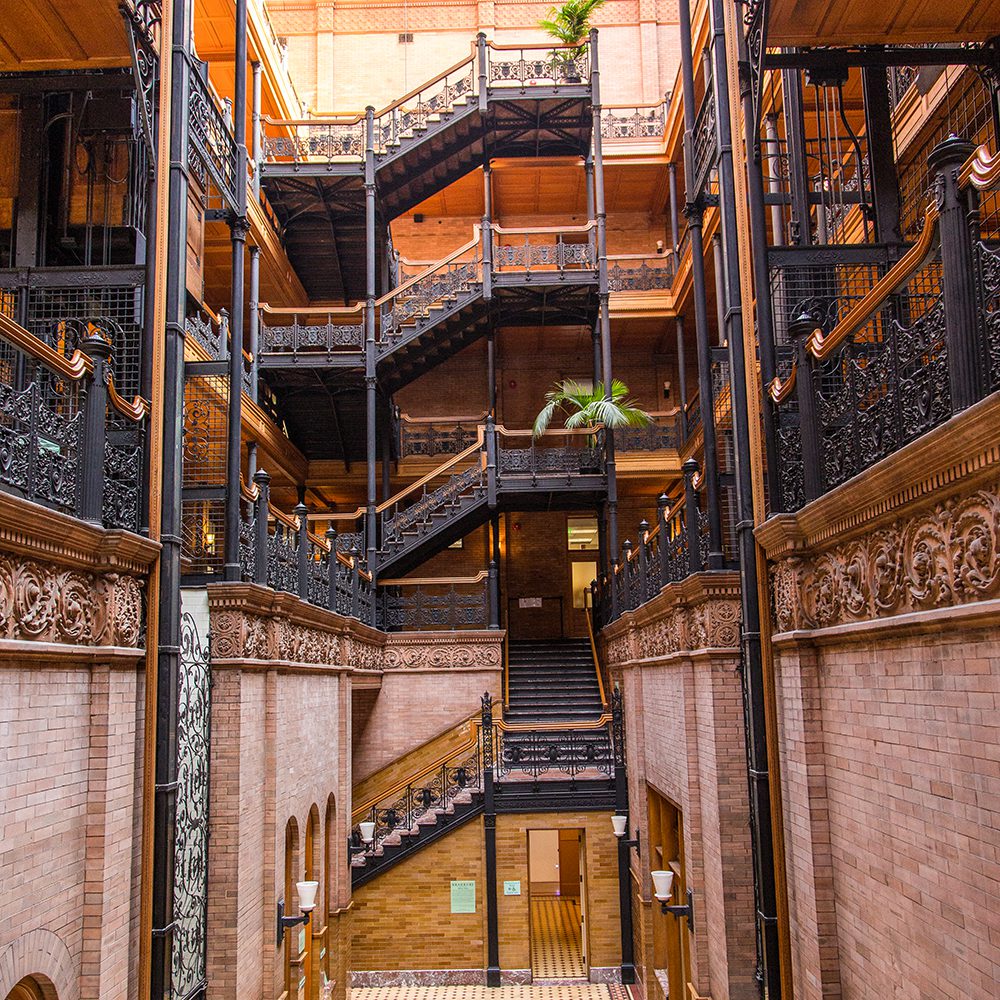
The glorious interior architecture of the Bradbury Building
It’s in the immediate surrounding streets where you can sense DTLA’s troubled past. In the 1980s and 1990s, you only walked through nearby Skid Row — with its history of police raids and homelessness — if you dared. Cardboard-boxes littered sidewalks, strangers glowered and trouble followed you around. It was always empty after dark.
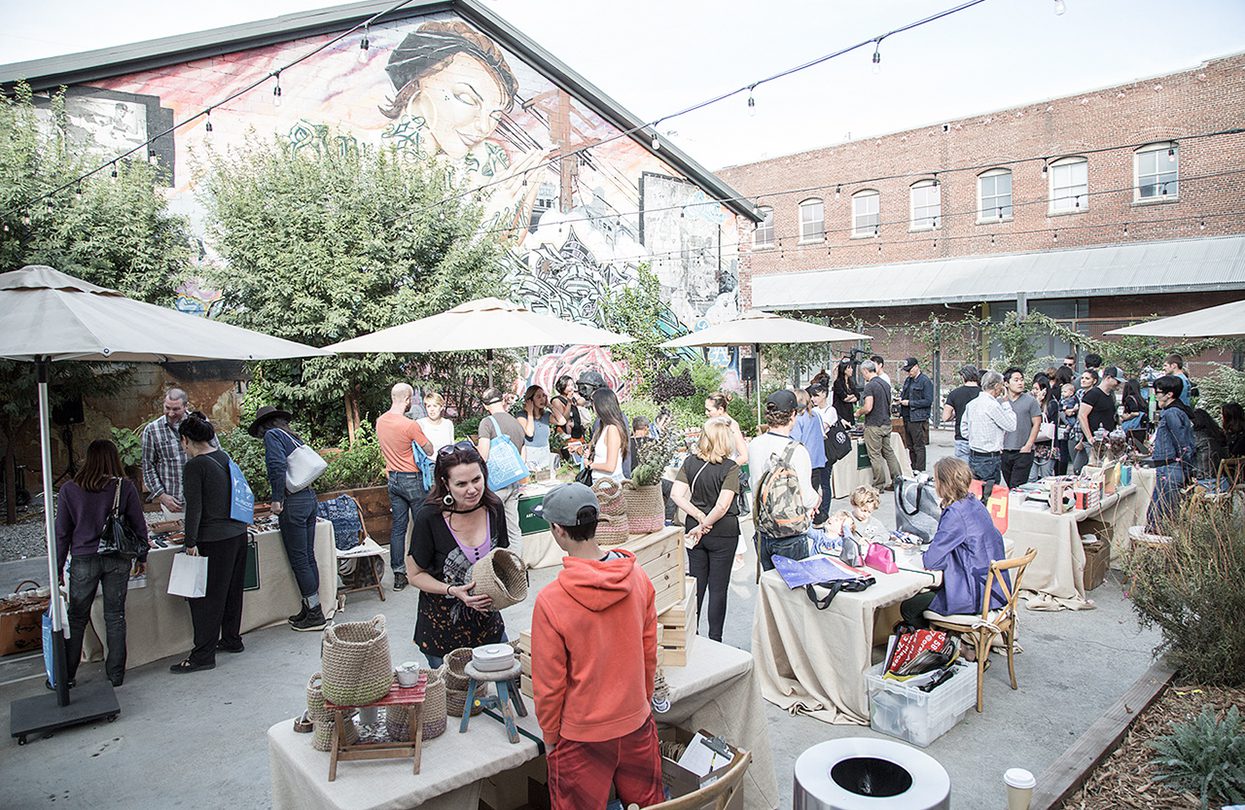
Art from the heart Hauser and Wirth’s galleries, interior market and shops are a nerve centre for the Arts Disctrict community
The revelation to city officials, though, was that it didn’t have to be this way. In the late 1990s, new laws loosened regulations on how the area’s vacant buildings could be developed. More affordable than market-rate housing saw footloose creatives move back from across wider Los Angeles, and lofts and warehouses that were once derelict were reoccupied, housing fashion designers, architects and media creatives. Now prices for loft apartments command what you’d pay for a one-bed condo in West Hollywood, leading to the emergence of idiosyncratic neighbourhoods between the high-rises.

Exterior – Benoit Linero
This turn around in DTLA is extraordinary, even by Los Angeles standards, and it’s clearly evident in the Fashion District (fashiondistrict.org), a 10-minute Uber west. To get the full effect, arrive before all the independent boutiques and designer clothes emporiums roll down their shutters for the night. As well as being home to the largest selection of textiles in the United States (around 200 stores, give or take), the 100-block area is flooded with warehouse showrooms brimming with the latest fashion-forward ideas. Helping push this fashion revolution is Santee Alley (thesanteealley.com), a somewhat chaotic, catwalk jumble of stores and flea market-style vendors, who are in business every day of the year. You’ll find it between Santee Street and Maple Avenue.
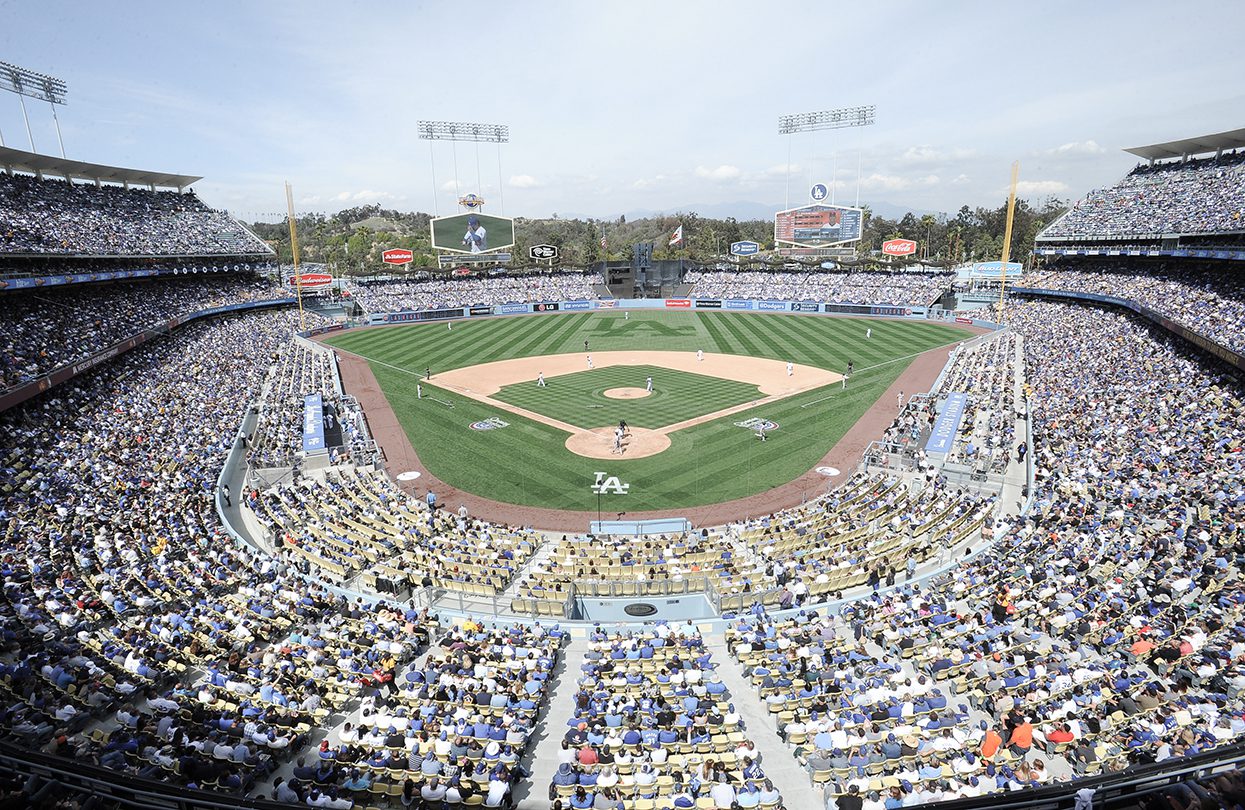
Go Dodgers! Located just north of DTLA, Dodger Stadium is worth the trip for an all-American rites of passage;
Not surprisingly, there’s plenty of great restaurants in the area. City Market South (citymarketsouth.com) is the epitome of DTLA’s ability to regenerate itself. The market dates to 1909 as the oldest farmers’ cooperative in the city, and its new tenants are breathing new life into the brick-and-mortar complex. You could join the beautiful people at Dama, a Latino restaurant and bar with tropical fruit bowl design (damafashiondistrict.com), or travel to Bologna where chef Steve Samson used to holiday with his grandparents at Rossoblu (rossoblula.com). While great Italian restaurants in Los Angeles are a dime to the dozen, at their most basic level they are meant to pay tribute to arguably the world’s greatest kitchen. And in this way Samson has gone big. Order the panzanella and pork meatballs, or pick over boards of wafer-thin salumi from the in-house butchery. The rest of it — veal chops, tortellini in brodo, duck ragu — is all very much as the Bolognese locals would like it to be.

Hauser and Wirth’s galleries
Perhaps the biggest statement of DTLA’s intent to reshape the Los Angeles map can be found to the north. Here you’ll discover The Broad (thebroad.org), a 120,000-square-foot, US$140 million contemporary art space housing more than 2,000 works. Casual art fans tend to be instinctive creatures, bee-lining to marquee names, which makes this gallery a tricky proposition. There are multiple masterworks from Jeff Koons, Andy Warhol, Joseph Beuys, Yayoi Kusama and Roy Lichtenstein, all taken from the private collection of philanthropist owners and Fortune 500 billionaires Eli and Edythe Broad. It’s a fabulous prospect, so give it at least half a day. North from here is Echo Park and Dodger Stadium (mlb.com/dodgers). It’s hardly high culture, but for a slice of pure, undiluted Americana close to DTLA, albeit with a side of over-priced nachos and watery Budweiser, a baseball game can’t be beat.

Lobby- Sydell Group
Undoubtedly, the message is clear. In a town that loves a box office remake, DTLA feels rejuvenated, reinvigorated and rebooted. The vanity of Los Angeles’ traditionally-popular neighbourhoods — Hollywood, Beverley Hills, Santa Monica and the rest — is that they will always be the heart and soul of Los Angeles. Not for much longer. DTLA has something to say about that.
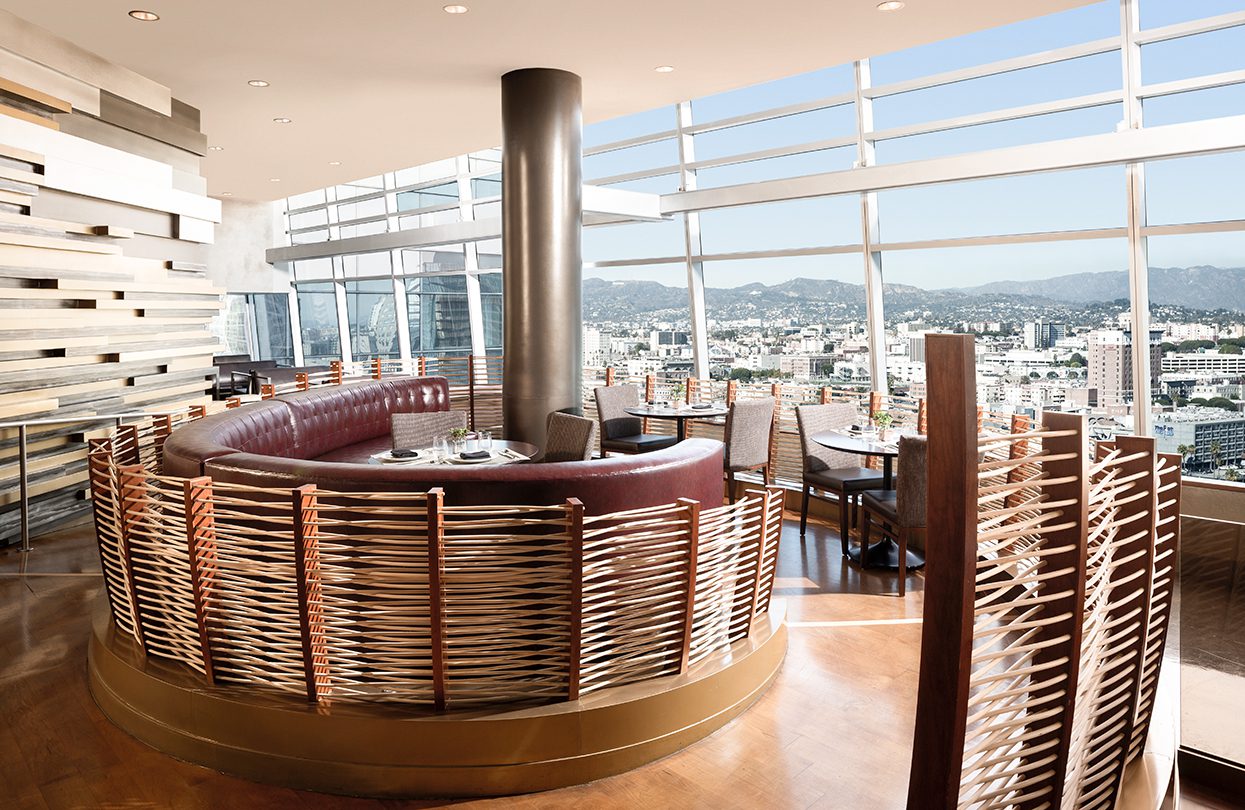
Ritz Carlton’s Nest restaurant
Where to Stay
NOMAD
The spirit of the 1920s thrives in this neo-classical hotel, beautifully decked with coffered ceilings and a lavish Italian flair endowed by renowned French interior decorator Jacques Garcia. Jewel-toned damasks and marble columns prevail in the chic communal areas; the dining areas moodily lit, but the suites shine with mostly white, wood and blue, as if stepping back from too much velvet and brocade. A terra-cotta tiled pool, highlighted with a grand tiki statue, marks the busiest place in the hotel where one can lounge around with their cocktails while overlooking the nightly views of DTLA.

The Broad Exterior – Photo by Mike Kelley
RITZ CARLTON
The swanky high-rise is perched by the outskirts of DTLA, gloriously accompanied by similarly prominent landmarks—the Staples Center and the Grammy Museum, not to mention the frenetic clubs and bistros lining up the avenue. Embedded with the subtle grace of the signature Ritz-Carlton brand, rooms are tastefully refined with soft neutral colours and the grand view of L.A. from the sweeping windows. A sprawling pool is lodged on the 26th floor, surrounded with hip cabanas and blue parasols, and fitness enthusiasts are indulged with Precor equipment in its sizeable gym. There are a plethora of dining options within the hotel, but Wolfgang Puck’s WP24 steals epicurean hearts with its star-speckled interiors and distinct Asian flavours.
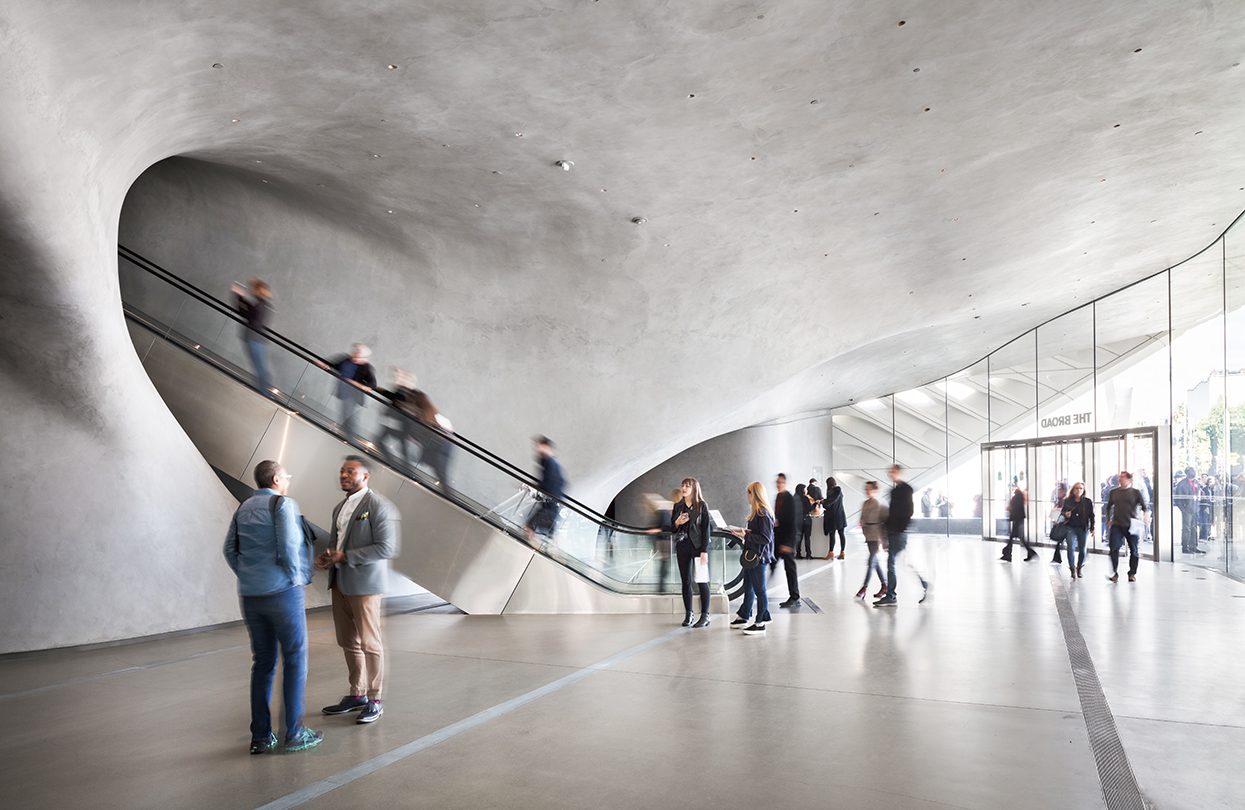
The Broad Lobby – Photo by Mike Kelley
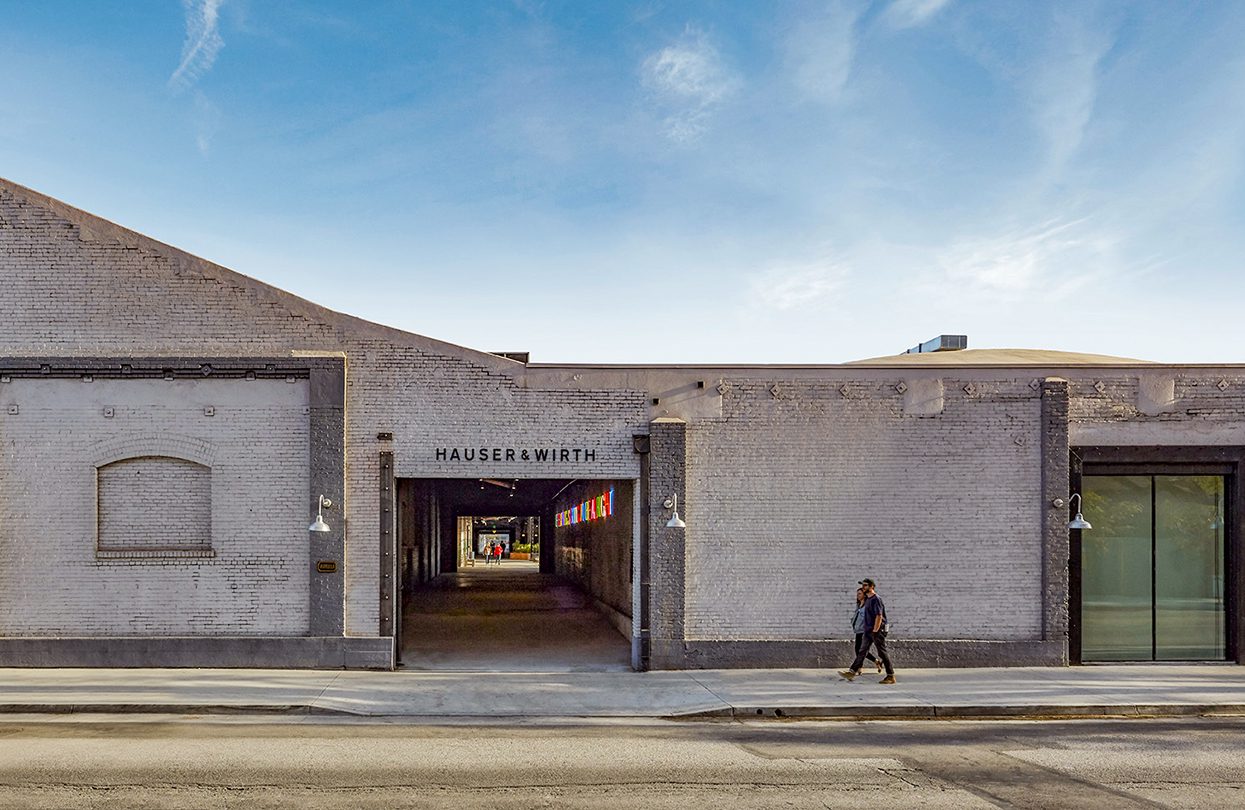
Hauser and Wirth’s galleries
LEVEL Furnished Living
Fully furnished, open-space suites in modern minimalist make a good alternative for California living, even if it is just a short vacation. One-bedroom suites stretch at least 710 square feet and is comprehensively installed with deluxe amenities, including a Bosch kitchen, a 50-inch flat-screen smart TV, and in-suite washer and dryer. The airy living space, also embellished with a private desk, is gorgeously capped off with a glassy balcony to soak in the views of the surrounding buildings. A 24-hour fitness facility, a heated outdoor pool, and jacuzzi complement the stay. Pets are allowed, with a designated fenced area for a brisk afternoon run. 
Subscribe to the latest edition now by clicking here.
© This article was first published in Dec-Jan 2020 edition of World Travel Magazine.
If you would like to comment on this story or anything else you have seen on World Travel Magazine, head over to our Facebook page or message us on Twitter.
And if you liked this story, subscribe to our bi-monthly World Travel Magazine, a handpicked selection of editorial features and stories from Global Destinations, Inspire Me, Insider, Style File, Wellness & Travel, City Travel, Suite Life, At Leisure, Short Breaks and much more.


